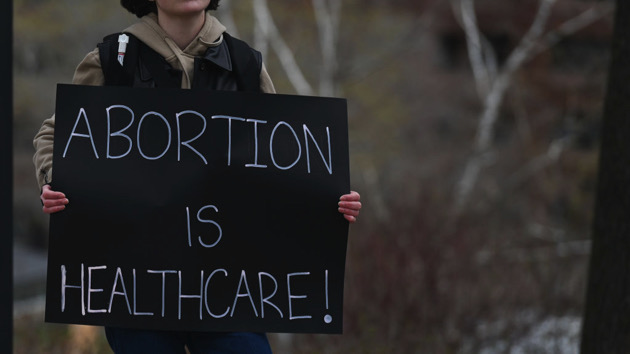
(NEW YORK) — As a growing number of states continue to pass strict abortion laws, Americans are facing more barriers when it comes to accessing the procedure.
However, one of the greatest obstacles pregnant people are often met with is the cost of obtaining an abortion.
An abortion can cost anywhere from $0 to more than $1,000, and it’s not just the medical costs that patients face, according to a study from the Guttmacher Institute, a research group focusing on sexual and reproductive health.
Those seeking an abortion may also have out-of-pocket costs for traveling out of town — or, in some cases, out of state — as well as food, lodging, gas, coordinating child care and accessing medication.
Now, with the Supreme Court potentially set to overturn or severely gut Roe v. Wade, attention has turned to abortion funds, which can help arrange and pay for abortion care, as well as other costs associated with the procedure.
What is an abortion fund?
An abortion fund is a nonprofit organization that provides direct funding to those seeking an abortion who may not be able to afford it.
Some funds completely or partially cover the costs strictly related to the procedure, such as for pills for medication abortions — which make up more than half of all abortions in the U.S. — or for an in-office procedure.
“We also provide what we call practical support,” Chasity Wilson, executive director of the New Orleans Abortion Fund, which helps provide funding for people living in the Gulf South, told ABC News.
This includes surrounding costs such as transportation to and from abortion clinics, translation services, gas, lodging and child care — and emotional support.
In addition to local funds, there are 92 abortion funds — as of October 2021 — that are members of the National Network of Abortion Funds, which helps connect organizations across the country.
How do they work?
Some funds, such as the NOAF, allow women to call directly to ask for help paying for an abortion.
“The patient reaches out by calling our hotlines,” Wilson said. “Sometimes we also participate in solidarity funds when another fund that provides these services may reach out and say, ‘Hey, we have a person whose procedures cost $1,300 so we can spend $500, how much can you help?'”
Other funds, such as the Women’s Reproductive Rights Assistance Project — a nonprofit that helps provide funds to people seeking abortion services or emergency contraception — speak directly with clinics and providers.
“We have a network of over 700 clinics, doctors and hospitals that are networked with our fund that contact us on a daily basis to let us know that they have a patent in need of an abortion and that patient needs funding,” Sylvia Ghazarian, executive director of WRRAP, told ABC News. “When a clinic calls us, we return the call and make a pledge commitment to that clinic.”
Ghazarian said the fund will then receive the invoice from the clinic and cover the cost within the week.
WRRAP’s statistics from 2021 showed that 73% of the fund’s patients were people of color and 76% received public assistance. Additionally, NOAF’s 2021 report found that 71% of patients were Black or African American and about two-thirds were on Medicaid.
“A lot of these populations have traditionally less access to health care, but by no means does this mean these are the populations that receive abortions most frequently,” Wilson said.
Who can access them?
Some abortion funds have no requirements. Ghazarian said WRRAP helps provide funding for abortions across the U.S.
Other funds help specific groups of women based on where they live, their racial/ethnic makeup, or how far along they are in their pregnancies.
For example, the Midwest Access Coalition helps cover costs for people seeking abortions in the Midwest, while the Northwest Abortion Access Fund does the same for those living in Alaska, Idaho, Oregon and Washington.
Meanwhile, the Indigenous Women’s Fund provides support for Native or Indigenous Americans seeking to end their pregnancies.
Others, like the Brigid Alliance, help fund those who have to travel long distances to receive late-term abortions.
How do abortion funds get their funding?
Most abortion funds receive support through individual donations. Since the leak of the draft opinion, first reported by Politico, there has been a substantial increase in donations to abortion funds across the country.
The National Network of Abortion Funds told Good Morning America it received more than $1.5 million in donations within three days of the leak reporting.
Ghazarian said news of the leaked draft has left many patients confused. She said she spoke with an abortion clinic earlier in the week that was receiving calls from patients asking if their abortion appointments were still on.
Because of this, another part of WRRAP’s work is community outreach so people can know what the abortion laws are in the part of the country they live in.
“We’re trying to generate information out there not just to clinics but to communities, so that individuals know we’re still here and we will still support them no matter what,” Ghazarian said.
Copyright © 2022, ABC Audio. All rights reserved.
